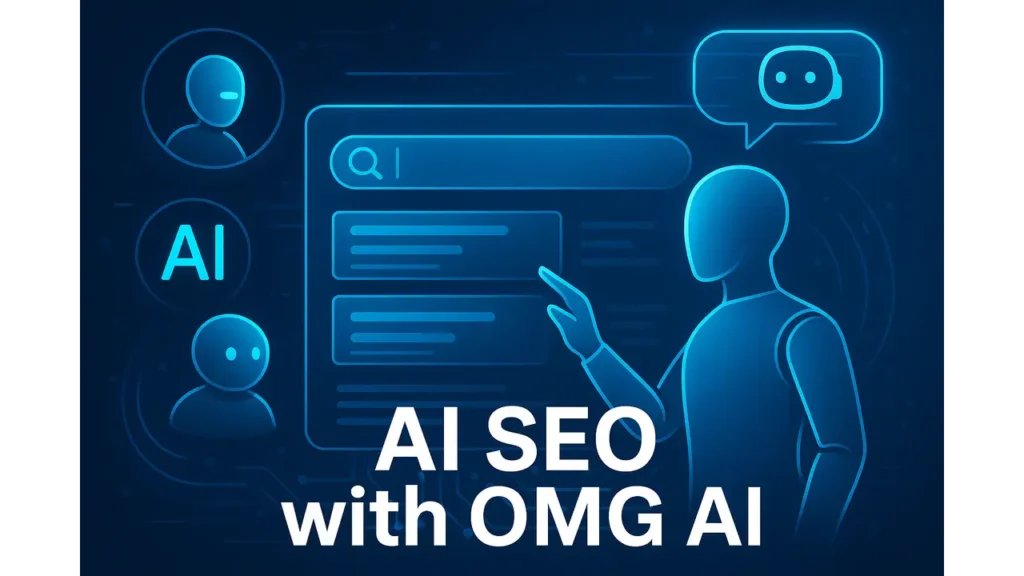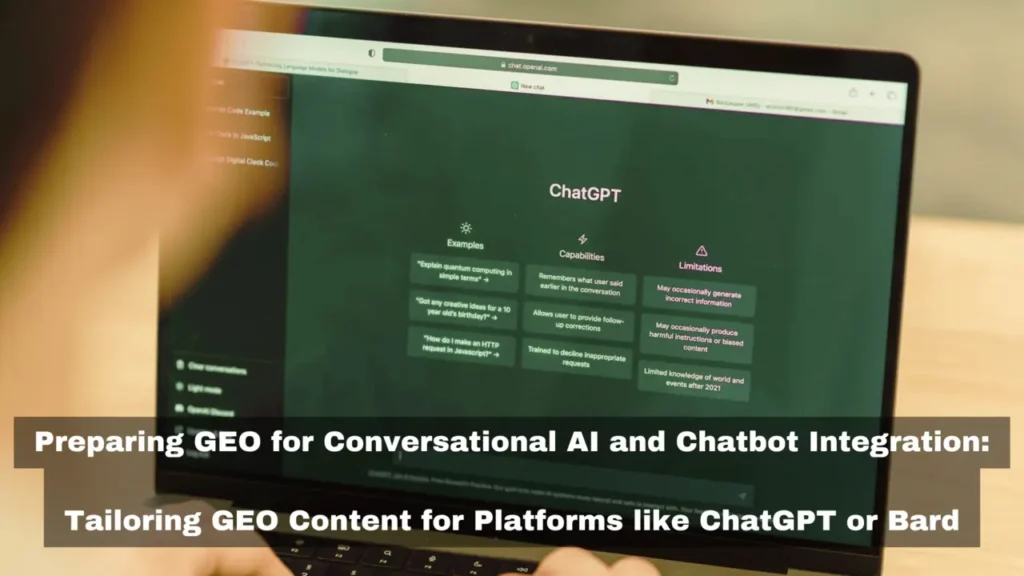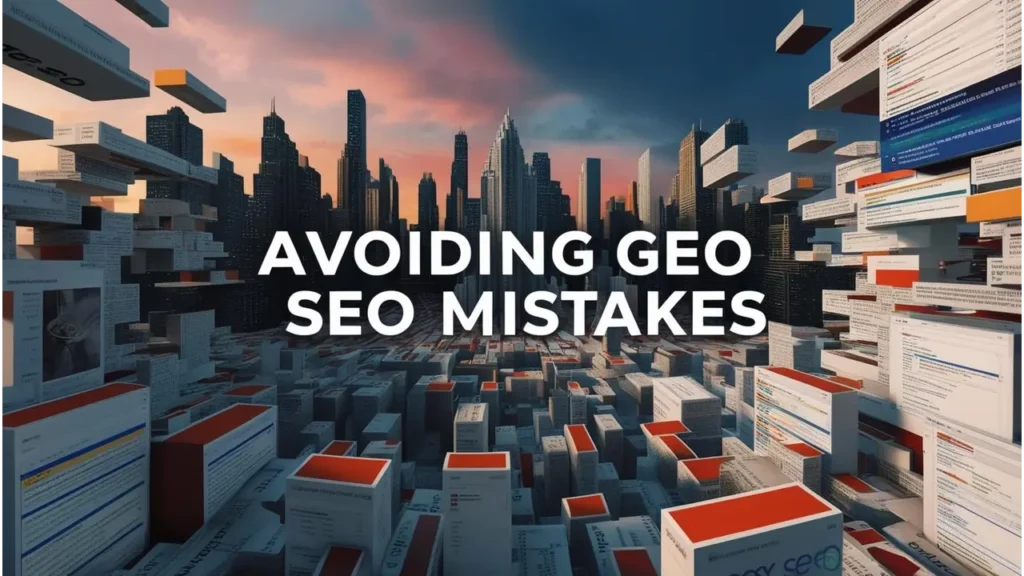Introduction
In the rapidly evolving landscape of digital marketing and e-commerce, staying ahead of search trends is no longer confined to traditional text-based strategies. With the surge in visual search technologies, consumers are increasingly relying on images and visual cues to discover products and services. This paradigm shift has given rise to Visual Search Optimization (VSO), a strategy focused on enhancing the discoverability and relevance of visual content.
However, the true potential of VSO can only be unlocked when coupled with Generative Engine Optimization (GEO). Generative Engine Optimization leverages advanced AI-driven content generation tools to create highly engaging and search-friendly visual assets. By optimizing these AI-generated visuals for search engines, businesses can significantly enhance user engagement and conversion rates.
This article delves into the symbiotic relationship between Generative Engine Optimization and VSO, illustrating how Generative Engine Optimization can supercharge VSO strategies to make AI-generated content more discoverable and impactful. Through actionable insights and best practices, we aim to equip businesses with the knowledge to harness this powerful synergy and stay competitive in the ever-evolving digital ecosystem.
Key Takeaways
- Generative Engine Optimization (GEO) leverages AI, Machine Learning, and NLP to optimize content for AI-driven search engines.
- GEO enhances Visual Search Optimization (VSO) through AI-generated metadata, alt-text, and automated image tagging.
- Combining GEO with VSO boosts search accuracy, user engagement, and e-commerce performance.
- AI-driven personalization and real-time search refinement are key benefits of GEO.
- Challenges include balancing AI automation with authentic SEO practices to avoid search engine penalties.
- GEO is the future of SEO, helping brands rank higher in AI-powered visual search results.
Table of Contents
Unlocking the Power of Generative Engine Optimization (GEO)
Generative Engine Optimization is the cutting-edge process of leveraging artificial intelligence, machine learning, and natural language processing (NLP) to enhance content for AI-powered search engines. Unlike traditional SEO methods that rely heavily on keyword stuffing and backlink strategies, Generative Engine Optimization focuses on creating high-quality, contextually relevant, and engaging content that aligns with AI-driven algorithms.
GEO integrates AI technologies to generate AI-driven metadata that enhances content indexing and ranking while automatically refining content to improve readability and relevance. It also analyzes search intent to ensure alignment with user needs and expectations, optimizing visual elements for better performance across visual search platforms.
As AI-driven search engines like Google and Bing continue to evolve, traditional SEO strategies are losing effectiveness, making way for Generative Engine Optimization (GEO). GEO focuses on adapting content to AI-powered algorithms, ensuring better visibility in search results. It enhances user experience by delivering highly personalized, engaging, and intent-driven content that resonates with audiences. Additionally, GEO optimizes content for emerging search environments, including voice and visual search, making it more discoverable across diverse platforms. By aligning with AI’s ability to understand context and user intent, GEO ensures content remains relevant, accessible, and impactful.
Proven Strategies for Effective Generative Engine Optimization
To make the most of Generative Engine Optimization, businesses should focus on:
- AI-Generated Metadata: Craft compelling titles, descriptions, and tags that align with search engine algorithms.
- Automated Content Refinement: Use AI tools to improve grammar, readability, and keyword density.
- Search Intent Optimization: Understand user behavior and create content that satisfies their needs.
- Visual Search Enhancement: Optimize images and videos for platforms like Google Lens and Pinterest Lens.
Related Resource: Common GEO SEO Mistakes
Avoid pitfalls like over-automation, ignoring user intent, and failing to update AI models regularly. By understanding these mistakes, businesses can effectively harness the power of Generative Engine Optimization for long-term success.
Mastering Visual Search Optimization (VSO): The Future of AI-Driven Discovery
In a world where images speak louder than words, Visual Search Optimization (VSO) is revolutionizing the digital landscape. Imagine strolling through a bustling market, eyes scanning vibrant colors and unique patterns. Suddenly, a stunning pair of sneakers catches your attention. With a quick snap on your phone’s camera, you instantly find the exact product online. Magic? No. It’s the power of VSO.
What is VSO and Why Does It Matter?
Visual Search Optimization (VSO) is the art and science of enhancing digital images to make them easily discoverable by search engines powered by Artificial Intelligence (AI). In an era dominated by platforms like Google Lens, Pinterest Lens, and Amazon StyleSnap, VSO is not just a trend; it’s the new frontier in search engine optimization.
The importance of VSO lies in bridging the gap between human curiosity and digital solutions. By optimizing visual content, brands can attract more traffic, increase conversions, and stay ahead in the competitive AI-driven search landscape.
The Distinction: Visual Search vs. Traditional Text-Based Search
Traditional text-based searches rely on keywords and phrases, while visual search leverages AI algorithms to analyze images and provide relevant results. For instance, typing “vintage leather jacket” in Google yields results based on text and metadata. However, snapping a picture of the jacket through Google Lens delivers precise product matches, style suggestions, and purchasing options.
This shift is driven by the evolution of computer vision technology, allowing search engines to understand visual content in ways that were once exclusive to human perception.
Key Factors Affecting VSO
- Image Recognition and Tagging AI-driven image recognition enables search engines to identify objects, colors, patterns, and even emotions within an image. Accurate tagging of visuals with relevant keywords and categories enhances visibility and improves search rankings.
- AI-Powered Visual Content Analysis Algorithms analyze visual elements like shapes, textures, and colors to deliver more precise results. For example, Pinterest Lens can identify furniture styles or outfit ideas from a single image, guiding users to similar products or inspirations.
- Schema Markup for Images Implementing structured data markup (like schema.org) helps search engines understand the context of images. By providing details such as product type, price, and availability, businesses can enhance their chances of appearing in rich search results.
- Alt-Text and Metadata Optimization Alt-text descriptions and metadata play a critical role in accessibility and search engine indexing. Including relevant keywords in these fields allows search engines to understand image content and improve ranking.
Case Study: The Visual Search Giants
- Google Lens: Leveraging AI and machine learning, Google Lens can identify plants, translate text, and even suggest shopping options. Its integration with Google Shopping has transformed e-commerce experiences.
- Amazon StyleSnap: A game-changer for fashion enthusiasts, this tool allows users to upload photos and find similar clothing items on Amazon, enhancing the shopping journey.
- Pinterest Lens: Known for inspiring creativity, Pinterest Lens identifies home décor, fashion trends, and recipes from uploaded images, helping users explore and purchase related items.
Related Resource: Generative Engine Optimization in UAE
By combining Generative Engine Optimization with VSO strategies, businesses can create high-quality visual content that ranks higher in search results and enhances user experience.
How Generative Engine Optimization Enhances Visual Search Optimization?
1. AI-Generated Descriptions and Alt-Text for Better Image Indexing
In the realm of Visual Search Optimization (VSO), crafting precise and engaging image descriptions and alt-text is crucial. Generative Engine Optimization (GEO) leverages AI algorithms to automatically generate rich, context-aware descriptions and alt-text that enhance accessibility while improving search engine indexing. Deep learning models analyze image elements to understand their context and content, while Natural Language Processing (NLP) creates descriptive, keyword-rich text that aligns with search engine algorithms. Additionally, semantic tagging ensures the generated alt-text remains relevant and optimized for SEO. This results in enhanced visibility in search results, an improved user experience for visually impaired users, and higher rankings in image search engines like Google Images and Pinterest.
2. Automated Image SEO Using AI-Based Tagging and Metadata Creation
Gone are the days of manual tagging and metadata creation, as GEO-driven AI tools now automate the process by generating accurate, keyword-optimized metadata and tags for images, ensuring seamless and efficient indexing. AI image recognition identifies objects, themes, and emotions within images, while metadata generation algorithms create relevant tags, descriptions, and titles. Additionally, dynamic keyword insertion ensures content aligns with trending search terms. This automation boosts image discoverability in search engines, reduces manual effort and human error, and enhances the overall SEO strategy by improving the image’s context and relevance.
3. AI-Powered Content Personalization Based on User Search Behavior
Imagine a search engine that understands your visual preferences and delivers personalized results—GEO makes this possible by leveraging AI to analyze user behavior and tailor content accordingly. User behavior tracking captures data on clicks, dwell time, and interaction patterns, while machine learning algorithms predict user intent and preferences. This enables dynamic content delivery, providing customized visual results based on real-time analysis. As a result, AI-powered personalization increases user engagement and satisfaction, boosts conversion rates through targeted content delivery, and enhances search engine rankings by improving user interaction signals.
4. The Potential of AI-Generated Content in Improving Visual Search Results
AI-generated content is transforming the landscape of visual search, making it more intuitive, engaging, and user-friendly. With Generative Engine Optimization (GEO) at the forefront, AI can craft compelling visual narratives, design infographics, and generate product descriptions that align perfectly with user queries. This innovation enhances Visual Search Optimization (VSO) in multiple ways—visual storytelling captivates audiences and keeps them engaged longer, content clustering organizes related images for seamless navigation, and optimized image captions boost search relevance and click-through rates. The result? Improved search engine rankings, a more satisfying user experience, and higher conversion rates, particularly for e-commerce platforms. As AI continues to evolve, its role in shaping the future of visual search will only become more powerful.
5. How GEO and VSO Work Together to Refine Search Accuracy and Relevance?
GEO and VSO are a match made in digital heaven, working seamlessly to enhance search accuracy and user experience. While Visual Search Optimization (VSO) focuses on refining the visual aspect of search, Generative Engine Optimization (GEO) strengthens the backend by improving metadata, alt-text, and tagging. This synergy ensures that AI-driven algorithms enhance content indexing, while VSO techniques improve visual presentation and user interaction. Additionally, GEO’s data analytics provide valuable insights into user behavior, allowing VSO strategies to evolve dynamically. The end result? Higher visibility in search engines, more accurate and relevant search results, enhanced user satisfaction, and increased website traffic and conversion rates. By working together, GEO and VSO create a more intelligent, user-centric search experience that benefits both businesses and consumers alike.
Key Benefits of Integrating GEO into Visual Search Optimization (VSO)
Imagine this: You’re strolling through a quaint vintage store, your eyes drawn to a unique leather jacket that screams individuality. But there’s a catch. No tag, no brand, and no way to search for it online. This is where Visual Search Optimization (VSO) powered by Generative Engine Optimization (GEO) steps in, transforming a simple snapshot into a seamless search experience.
Generative Engine Optimization (GEO) leverages advanced AI algorithms to supercharge VSO, making visual content more discoverable and engaging. Here’s how integrating GEO into VSO opens up a world of opportunities:
1. Enhanced Search Accuracy
Imagine a world where search engines don’t just rely on keywords but understand the visual language of images. With GEO, AI-driven optimization improves image recognition and tagging, allowing search engines to identify intricate details like textures, colors, and patterns. This means your perfect leather jacket is just a click away, without the hassle of typing endless descriptions.
2. Improved User Engagement
People love personalized experiences. GEO analyzes user behavior and preferences, tailoring visual search results to individual tastes. For instance, if you’re an eco-conscious shopper, GEO ensures your visual search results are filled with sustainable fashion options. This personalized touch keeps users hooked and boosts engagement rates.
3. Automated Content Generation
Say goodbye to the tedious task of manually adding alt-text, captions, and tags. GEO’s AI capabilities can automatically generate accurate and SEO-friendly descriptions for your images. This not only saves time but also ensures your content is optimized for search engines, improving visibility and accessibility.
4. Better E-Commerce Performance
In the fast-paced world of e-commerce, visibility is everything. GEO helps businesses rank higher in visual search results by optimizing product images with the right metadata and schema markup. This leads to increased traffic, higher conversion rates, and ultimately, better sales performance.
The Flip Side of AI-Driven Visual Search: Challenges and Ethical Considerations
As AI takes center stage in shaping the future of search, Visual Search Optimization (VSO) powered by Generative Engine Optimization (GEO) isn’t without its share of complexities. While the tech-savvy world marvels at its accuracy and efficiency, there are crucial challenges lurking in the background. Let’s unravel the obstacles and ethical dilemmas that come with this game-changing innovation.

1. Ethical Concerns in AI-Generated Visual Content
AI-generated visuals blur the line between reality and manipulation, making it easy to create misleading product images and deceptive advertisements. Users may struggle to distinguish between authentic and AI-generated visuals, which can erode trust in brands and digital platforms. To address this, businesses must prioritize transparency by clearly disclosing AI-generated content. Ethical AI usage, combined with clear labeling, ensures that consumers can make informed decisions without falling victim to digital manipulation.
2. Risks of Misleading or Biased Image Tagging
AI models trained on biased or incomplete datasets risk misclassifying images or reinforcing harmful stereotypes, leading to inaccurate or misleading search results. Such biases can have real-world consequences, affecting user perception and decision-making. To mitigate this, AI models should undergo regular auditing and be trained on diverse datasets that reflect a broad spectrum of demographics and contexts. Additionally, manual intervention in image tagging can help correct errors and ensure more accurate representation in search results.
3. Deepfake and Synthetic Media Concerns
Generative Engine Optimization (GEO) enables the creation of hyper-realistic visuals and deepfake content, raising serious concerns about misinformation and digital forgery. These AI-generated visuals can be misused to manipulate public opinion, spread false narratives, or damage reputations. To counteract this, organizations and search platforms should implement AI content verification tools and apply watermarks to AI-generated visuals. This helps establish authenticity while preventing the unethical use of synthetic media in digital spaces.
4. Over-Dependency on AI Algorithms
While GEO enhances visual search ranking, excessive reliance on AI can diminish human creativity and the authenticity of storytelling. Automated content generation may prioritize algorithmic trends over genuine brand identity, leading to generic and uninspiring content. To maintain a balanced approach, businesses should integrate human-driven SEO strategies alongside AI-powered automation. Human creativity, combined with AI efficiency, ensures that content remains engaging, unique, and aligned with brand messaging.
5. Quality vs. Automation Dilemma
AI can efficiently generate alt-text, captions, and metadata, but it often lacks the creativity and emotional depth required to truly connect with audiences. Over-automated content may feel robotic, reducing user engagement and overall SEO performance. The best approach is to use AI as a tool for initial content generation while allowing human writers to refine and enhance the quality. This combination ensures that content remains both optimized for search engines and compelling for users.
6. Risk of Search Engine Penalties
Search engines like Google actively penalize AI-driven over-optimization, such as excessive use of alt-text, keyword stuffing, or aggressive schema markup for images. Over-reliance on GEO without considering user intent can lead to lower rankings instead of improved visibility. To avoid such penalties, businesses should focus on creating organic, high-quality content that aligns with user search intent. GEO should be used as a supportive tool rather than the primary driver of SEO strategy, ensuring sustainable and ethical optimization practices.
Mastering Visual Search Optimization (VSO) with GEO: Best Practices in Action
Generative Engine Optimization (GEO) is transforming Visual Search Optimization (VSO) by making AI-driven image recognition smarter and more accurate. From enhancing metadata to structuring visual content, GEO helps images get discovered effortlessly. Brand like Google Lens showcase how AI-powered visual search is reshaping the way users interact with digital and physical spaces.
1. Optimizing AI-Generated Image Metadata: The Key to Ranking Higher in Visual Search
Imagine your product images not just being seen but ranking higher across platforms like Google, Pinterest, and Amazon. The secret lies in optimized AI-generated metadata, which enhances search visibility and accessibility. Accurate and relevant alt-text is crucial for every image, and with Generative Engine Optimization (GEO), AI can generate intelligent alt-text and captions that improve rankings while making content more inclusive.
Additionally, structured data markup (such as Schema for images) helps search engines understand the context of your visuals, further boosting discoverability. Taking it a step further, dynamic AI-based image categorization allows AI models to automatically sort and classify images, ensuring better user experience and reducing bounce rates. By leveraging GEO-powered metadata, businesses can maximize the impact of their visuals, making them more searchable, engaging, and effective in driving conversions.
2. Using AI-Powered Tagging for Visual Search Optimization: Let AI Do the Heavy Lifting
Ever wondered how Google Lens or Pinterest Lens can instantly identify products, objects, or landmarks just from an image? The secret lies in AI-powered tagging, enhanced by Generative Engine Optimization (GEO). By training AI models to tag images with relevant keywords, search engine indexing improves, making content more discoverable in visual search results. Machine learning-based object detection further refines this process by recognizing shapes, patterns, colors, and objects, allowing users to find exactly what they need with a simple image search.
But it doesn’t stop there; GEO also optimizes visual content for voice search queries. As visual and voice search becomes increasingly interconnected, AI can now interpret user intent behind voice-based image searches, creating a seamless and intuitive search experience. With AI-powered tagging, the future of search is more precise, efficient, and user-friendly than ever.
3. Enhancing Personalization with GEO & VSO: Giving Users What They Want
What if your visual search results could evolve based on your behavior and preferences?
With Generative Engine Optimization (GEO), this is now a reality. AI-driven insights analyze user behavior, preferences, and search history to curate personalized visual content, ensuring that search results align with individual interests. This adaptability extends to user intent—if someone searches for “minimalist living room designs,” GEO-powered Visual Search Optimization (VSO) prioritizes sleek, aesthetic interiors over traditional styles. Additionally, real-time AI analysis refines search results dynamically, tracking user interactions and allowing brands to adjust content instantly for better engagement. By leveraging GEO, visual search is becoming more intelligent, intuitive, and user-centric, transforming the way we discover and interact with online content.
Related Resource: Generative Engine Optimization Strategy Mistakes
Case Studies: How Generative Engine Optimization (GEO) is Transforming Visual Search Optimization (VSO)
In the era of AI-driven search, Generative Engine Optimization (GEO) is becoming the backbone of Visual Search Optimization (VSO). From refining image recommendations to boosting e-commerce conversions, leading platforms are already leveraging this powerful duo to dominate the search landscape.
Let’s explore real-life success stories where GEO and VSO joined forces to redefine the search experience.
1. Pinterest’s AI-Driven Visual Search: Turning Images into Search Engines
Imagine scrolling through Pinterest and stumbling upon the perfect aesthetic outfit or a dreamy home interior. With a single tap, Pinterest not only identifies similar items but also directs users to relevant products and brands. This seamless experience is powered by its Visual Discovery Engine, which relies on Generative Engine Optimization (GEO) to analyze visual elements like colors, patterns, and textures. GEO plays a crucial role in refining image tagging, ensuring that Pinterest suggests relevant visuals based on user behavior and preferences.
Additionally, it enables real-time updates to search results, making the experience highly personalized. The impact? Pinterest sees higher user engagement, increased ad conversions, and enhanced product discoverability for brands, making it a powerhouse in AI-driven visual search.
2. Google Lens: Revolutionizing Product Search with GEO
Ever spotted a unique pair of sneakers but had no idea where to buy them? Thanks to Google Lens, visual search has become as easy as snapping a picture. By leveraging GEO, Google Lens takes image recognition to the next level, analyzing objects, identifying product types, and pulling up relevant listings from e-commerce platforms.
GEO-powered algorithms not only enhance object detection but also optimize product metadata, allowing brands to rank higher in visual search results. This means that when a user takes a photo of a product, GEO ensures they receive accurate and relevant matches instantly. As a result, brands experience better product visibility, e-commerce platforms see higher conversion rates, and users enjoy a faster, more intuitive search experience.
3. E-Commerce Giants Using GEO for Visual Search Success
Retail giants like Zara, IKEA, and ASOS are already harnessing the power of Generative Engine Optimization (GEO) to drive visual search conversions. GEO automates product image tagging with relevant keywords and categories, ensuring products appear in the right searches. It also optimizes alt-text, metadata, and structured data markup, helping brands rank higher in search engines. More importantly, GEO personalizes product recommendations based on user intent and past search behavior, creating a more tailored shopping experience.
The results speak for themselves: Zara has reported a 30% increase in sales through visual search traffic, IKEA has improved customer experience while reducing bounce rates, and ASOS has achieved higher product discoverability and click-through rates. As visual search continues to evolve, GEO is proving to be an essential tool for brands looking to stay ahead in the competitive e-commerce landscape.
How Generative Engine Optimization (GEO) is Redefining VSO?
The digital world is evolving at lightning speed, and Generative Engine Optimization (GEO) is at the heart of this transformation. While Visual Search Optimization (VSO) has already begun to reshape how we search for information through images, the future holds even more exciting possibilities as AI becomes smarter and more intuitive.
1. The Rise of AI-Driven Visual Commerce
Imagine spotting a stylish dress on Instagram or a beautiful piece of furniture on Pinterest and instantly being directed to the exact product page. With GEO-powered Visual Search Optimization (VSO), this is no longer just a possibility; it’s becoming the new normal in e-commerce. Behind the scenes, GEO leverages AI-based image recognition to identify products and match them with online listings, helping brands optimize their visual content for higher visibility in search engines.
Additionally, personalization through user behavior tracking further enhances conversion rates by displaying the most relevant products to potential buyers. The future impact of this technology is immense: visual commerce will dominate product discovery, reshaping online shopping experiences, while e-commerce brands integrating GEO with VSO will rank higher and sell faster in an increasingly competitive market.
2. The Evolution of AI-Powered Image Indexing
Gone are the days when SEO was solely dependent on keywords and meta descriptions. With the advent of GEO and AI-driven image indexing, search engines are now interpreting visuals as accurately as text, revolutionizing how content is ranked. AI models can now analyze the context of an image, including its objects, colors, and patterns, making product discovery faster and more precise.
Traditional SEO practices, such as manual tagging and metadata optimization, are gradually being replaced by automated AI tagging, streamlining the indexing process. The implications are clear: websites featuring high-quality visuals with AI-optimized metadata will rank higher, and the SEO landscape will shift from traditional keyword-based strategies toward visual data optimization, making search engines more intuitive than ever before.
3. Deep Learning & the Role of GANs in VSO
Have you ever wondered how platforms like Google Lens or Pinterest Lens can recognize even the most intricate visuals? The answer lies in Generative Adversarial Networks (GANs): a deep learning model that enables AI to generate and enhance visual data. GANs play a critical role in Visual Search Optimization (VSO) by filling in missing visual details, ensuring more accurate search results. With GEO-driven deep learning models, AI can detect patterns, textures, and objects more efficiently, improving overall search relevance.
Moreover, AI-generated visuals are helping brands create realistic product mockups and virtual experiences, offering consumers an immersive shopping journey. As this technology advances, we can expect improved visual content recognition, leading to better search results and more engaging AI-generated shopping experiences.
4. Google’s Evolving Algorithms and the GEO-VSO Connection Redefining Search Rankings
With Google’s continuous algorithm updates, search engines are shifting their focus from traditional text-based ranking factors to visual content analysis. This shift places GEO at the forefront of SEO evolution, as it optimizes essential elements such as image alt-text, schema markup, and metadata to ensure higher rankings. Moving forward, search engines will prioritize AI-optimized visuals over conventional SEO techniques, making GEO an indispensable tool for brands looking to stay ahead in search visibility.
Additionally, GEO-powered platforms will have the agility to adapt to algorithm changes more efficiently, keeping them ahead of the competition. As a result, traditional SEO strategies will need to evolve alongside AI advancements, and websites focusing on GEO-driven visual content will dominate search results.
Read More: Generative Engine Optimization
The Road Ahead
As AI continues to evolve, the fusion of Generative Engine Optimization (GEO) and Visual Search Optimization (VSO) is set to drive digital marketing and e-commerce success. From AI-powered visual commerce to deep learning-based image indexing, the future of search is no longer just about words—it’s about understanding visuals with precision and intent. Brands that embrace this shift early will dominate the visual search landscape, while those relying on traditional SEO practices may struggle to keep up. The future of search is here, and it’s being painted in pixels.
Related Resource: Generative Engine Optimization
FAQs
What is the future of GEO and VSO?
AI-powered visual commerce, deep learning-based image indexing, and Google’s evolving algorithms will dominate the future of search.
How can e-commerce brands benefit from GEO and VSO?
By ranking higher in visual search results, increasing click-through rates, and boosting sales.
How do AI-generated descriptions improve image search results?
AI-generated descriptions provide search engines with accurate context about an image, improving indexing and ranking. This leads to better search visibility and enhances accessibility for visually impaired users.
How can businesses start using GEO and VSO effectively?
Brands should integrate AI-driven image optimization, train models for intelligent tagging, and leverage machine learning for personalized search results. Early adoption of GEO and VSO strategies will ensure higher search rankings and better user engagement.
How can WODO help businesses implement GEO and VSO strategies?
WODO specializes in AI-driven digital marketing, helping brands optimize visual content for higher search engine rankings and conversions.
Conclusion
In today’s digital world, Generative Engine Optimization (GEO) is revolutionizing Visual Search Optimization (VSO), helping brands dominate the search game like never before. From enhanced image recognition to AI-powered tagging and deep learning models, GEO is transforming how visual content is indexed and ranked on search engines. With GEO, businesses can improve search accuracy, boost user engagement, and enhance personalization, all while automating content generation through AI-driven tools. This not only helps brands rank higher in visual search results but also delivers a seamless and intuitive experience for users.
However, the future of GEO in VSO goes beyond mere optimization. With advancements in deep learning algorithms like GANs (Generative Adversarial Networks) and Google’s evolving search algorithms, the possibilities are endless. As AI continues to reshape digital marketing, brands that leverage GEO will gain a competitive edge and drive higher conversions through powerful visual search strategies.
Looking to elevate your brand’s visibility and dominate the AI-driven search landscape? Partner with WODO – The Best Digital Marketing Agency in Bengaluru and let us help you unlock the full potential of GEO in VSO. Let’s build your digital success story today!












